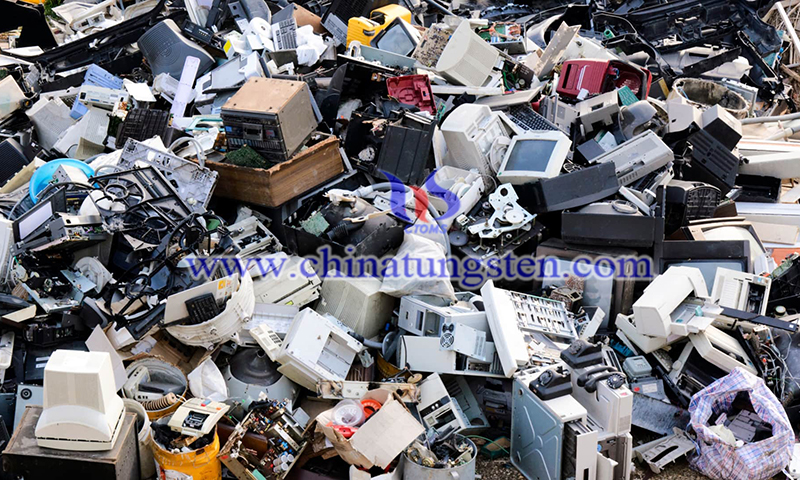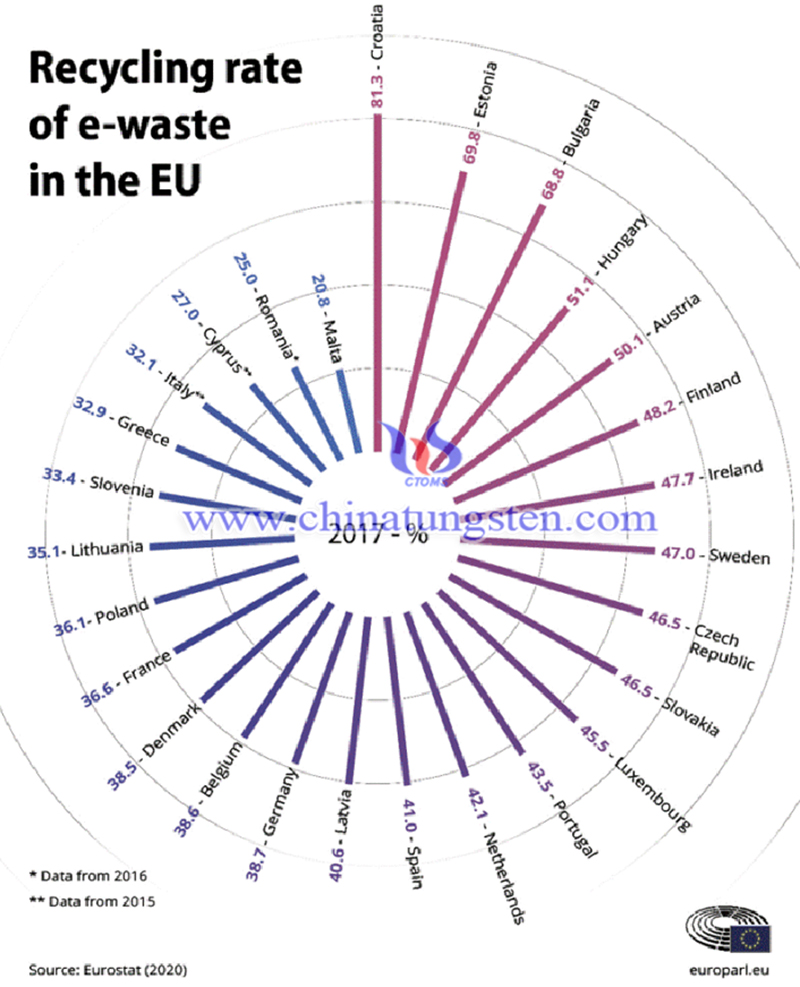Rare Earth Recycling and Methods to Quantify Electronic Waste
- Details
- Category: Tungsten's News
- Published on Wednesday, 22 June 2022 23:13
Rare earths play a critical role in green electronics and devices due to their specific chemical and physical properties, and there are three common ways to quantify electronic waste in rare earth recycling. Rare earths are a group of 17 metals (scandium, yttrium, and 15 other lanthanides) that are widely used in new technologies (cell phones, wind turbines, LCD screens, batteries). Applied in small amounts, these metals also enhance the physical or magnetic properties of strong other materials.
The market for rare earths remains small on a global scale: it is estimated to be about $9 billion per year. Despite their name, rare earths are not particularly rare from a geological point of view. Rare earths are generally mined in polymetallic mines. Today, 85% of global rare earth production comes from China, which has implemented an export quota policy since 2010, which has somewhat affected the stability of the market.

Rare earths are very difficult to replace, critical to the new information technology and energy transition, subject to geopolitical pressures and listed as one of the most critical materials by the EU. Therefore, it is an ideal candidate for recycling.
In the case of rare earths, there is a great deal of uncertainty about the actual contribution that recycling can make. First, it is very difficult to assess the amount of rare earths in existing products. There are a number of studies aimed at determining the amount of waste generated on European land and, therefore, assessing the amount of potentially recyclable material.
There are several ways to quantify electrical and electronic waste (WEEE), the first method (consumption and use method) estimates the average equipment of households with electrical and electronic equipment and the predictable lifetime of the equipment to deduct the potential amount of electrical and e-waste (WEEE). This method is used, for example, in the Netherlands.
The second method uses production and sales figures for a certain geographical area. This method is used by the German Electrical and Electronic Manufacturers Association. Another method is "saturation", which shows that as European households are saturated with electrical and electronic equipment, every new sale corresponds to an old item being thrown away. This method is used by the Swiss Environment Agency.

Methods for quantifying electronic waste in rare earth recycling rely on estimates of the life cycle of items, and these methods involve significant uncertainties in the quantities purchased and, in particular, in the life of the items. Assumptions about the life of an item must take into account consumer behavior. Nokia's survey on the future of cell phones shows that even in developed countries, only 12% of cell phones are recycled after use. These uncertainties make any international comparison difficult and explain the discrepancies, sometimes large, in waste quantity estimates.
According to manufacturers, the amount of rare earths varies considerably from product to product, while their functional properties are the same. Also, further use of rare earths in certain product lines is uncertain: some manufacturers, faced with fluctuations in the rare earth market, prefer not to use rare earths in their new product lines. For example, some car manufacturers do not use rare earths in the manufacture of electric vehicles.
- Rare Earth Manufacturer & Supplier, Chinatungsten Online: www.chinatungsten.com
- Tungsten News & Prices of China Tungsten Industry Association: www.ctia.com.cn
- Molybdenum News & Price: news.molybdenum.com.cn
- Tel.: 86 592 5129696; Fax: 86 592 5129797; Email: sales@chinatungsten.com



 sales@chinatungsten.com
sales@chinatungsten.com